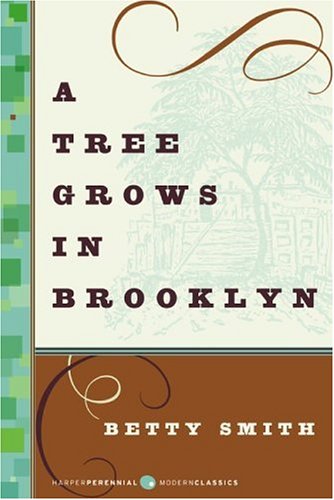I'm curious about the process by which we've decided which books are taught in high school English. I'm sure the teacher has some input, but from what I've heard, there isn't a lot of variability. When I tell people about the essays I had to write about The Scarlet Letter and Animal Farm, I can be reasonably sure of a sympathetic audience that had to go through the same thing. Once I graduated, it occurred to me that while Parkway South gave me a perfectly decent education, I should seek out books considered classics that I never got around to in the classroom. It's kind of the whole point of the Pop Culture Homework Project!
By doing this, I've discovered books that are wild, books that are wonderful, and books that are disappointing. But so far, I haven't caught up with a book that has really taken my breath away. Until now!
When Betty Smith's novel, A Tree Grows in Brooklyn, was published in 1943, it was an immediate best seller. Since then, it's been adapted into a movie (1945), a Broadway musical (1951), and a made-for-TV movie (1974). And I knew absolutely nothing about it but the title. The book begins in 1912, and revolves around Francie Nolan, who at the beginning of the story is an eleven-year-old girl living in the Williamsburg section of Brooklyn, New York. Nowadays, we think of Williamsburg as a cradle of wealthy hipsters and helicopter parents, but in 1912, it was stacked with tenement houses for the city's poor. The Nolans are among these poor, and while they aspire to a better life, they often go to bed with empty bellies.
It's tough to describe the "plot" of this novel, because it's a slice-of-life book. It may sound boring to hear that it deals with Francie's efforts to deal with events as everyday as trying to win a prize from the local candy store or how terrible her uncle is at relating to his horse. But just as the lives lived in The Up Series are about a collection of the little things, rather than just reporting on the highlights and lowlights, this book is much more than the sum of its parts.
Clearly, it's very autobiographical, but by making it fictional, Smith was able to get into more characters' heads than just Francie's. Everyone in the family is a well-rounded character, from her no-nonsense mother to her remorseful, alcoholic father to the kind, slutty aunt desperate for a child to raise. Nobody is wholly good or wholly bad. They're, you know, human. The book speaks frankly about Francie's romantic and sexual curiosity, something I found pretty shocking for a book written in the '40s.
Despite its slow pace, I couldn't put this book down; it's easy to see why it caught on with the public so quickly. Francie is enchanting in her normalcy, and the book she inhabits is rich and evocative. Far from romanticizing poverty like SOME things I could mention, the novel deals with the Nolans' money woes practically, without ever becoming a depressing slog.
So, it's time for a shake-up in American high school English classes. Teachers, take note. Why not teach this hopeful-yet-realistic novel that encompasses themes from poverty to the challenges of public education to economic exploitation to love? It's a hell of a lot better than that Heart of Darknesss crap.
A Tree Grows in Brooklyn: A

A virtual collection of the films, television, books, video games, and other assorted entertainments that make life enjoyable.

Labels
- ABC (10)
- Ads (5)
- Award Repo (4)
- Awards (15)
- Books (112)
- FourCourses (31)
- Games (42)
- Guilty Pleasure (7)
- Lifetime Pass (3)
- Media (92)
- Mini (7)
- Movies (238)
- Music (35)
- Pantheon (9)
- Pop Culture Homework Project (17)
- Rank and File (7)
- Rewatch (9)
- Save the Date (11)
- Shorties (22)
- State of the Art (55)
- TV (203)
Other Haunts
Followers
About Me
Powered by Blogger.
Copyright © Slice of Lime


0 comments:
Post a Comment